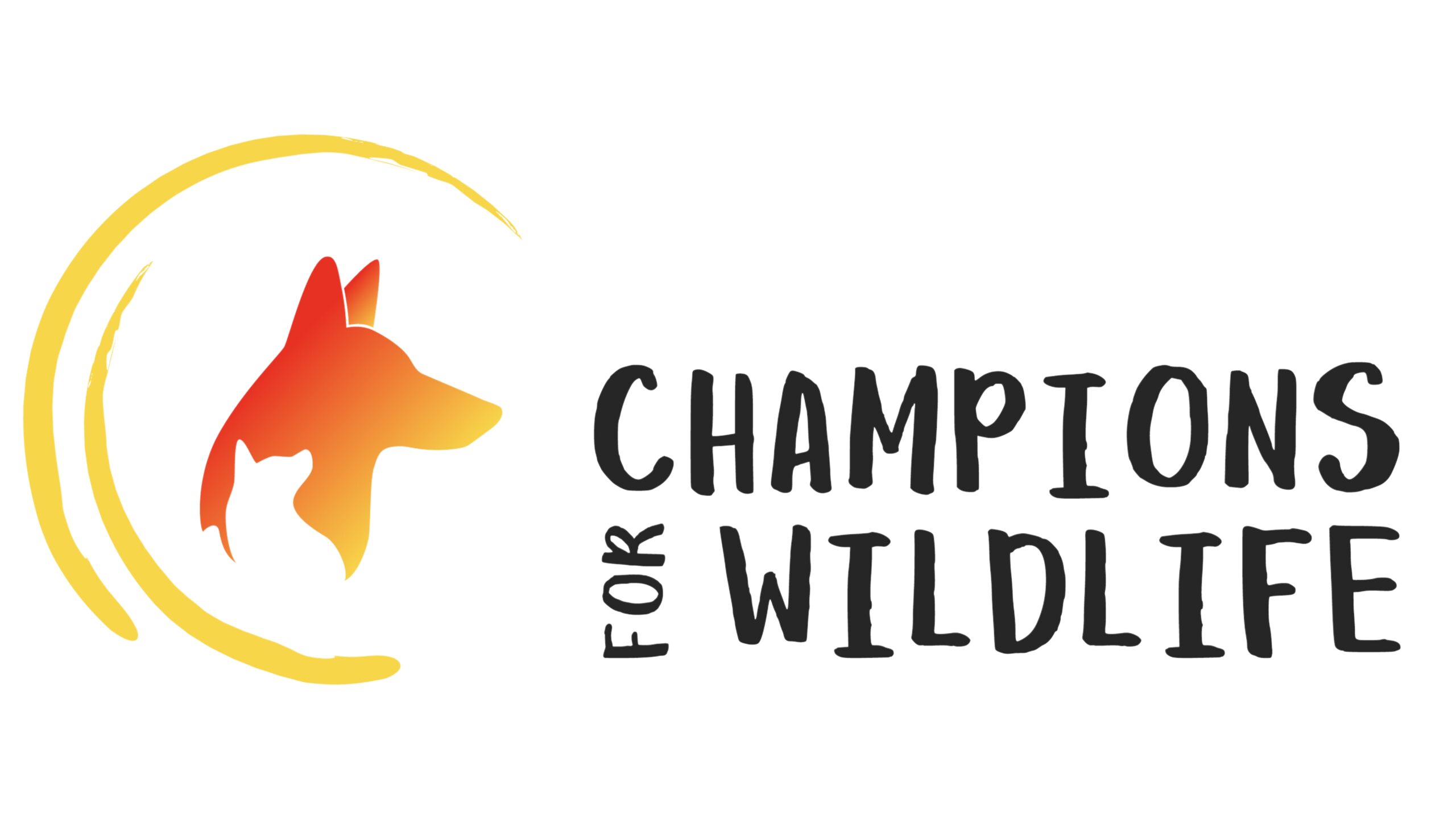The Red Wolf Art Sculpture is Finished. Now What?
The Red Wolf Art Sculpture is Finished. Now What?
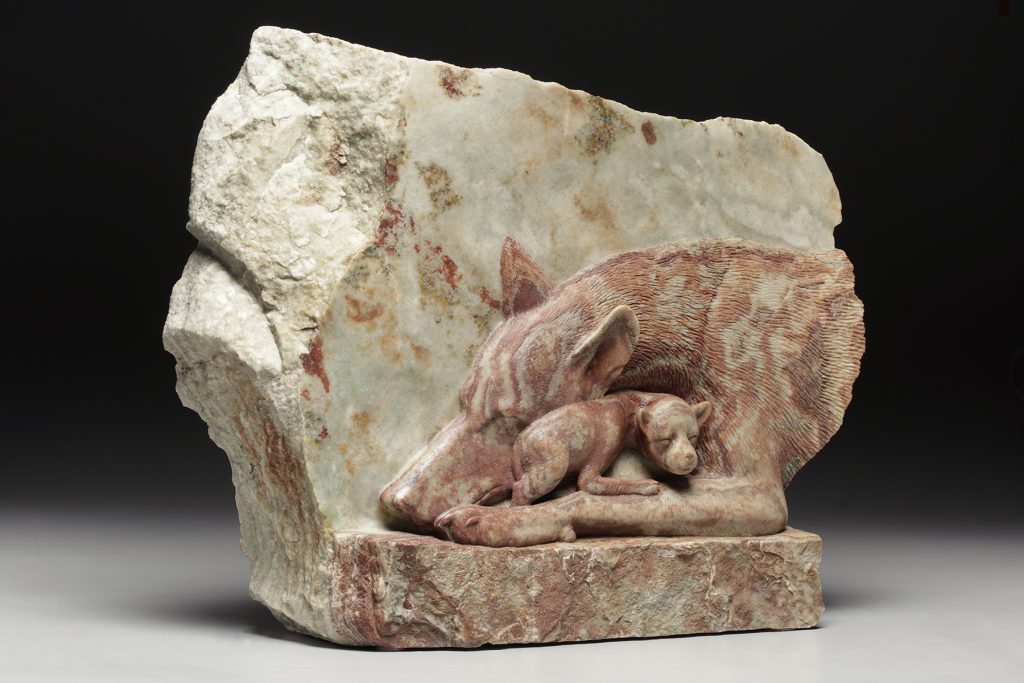
The finished sculpture which Dale names “Just Settling In”.
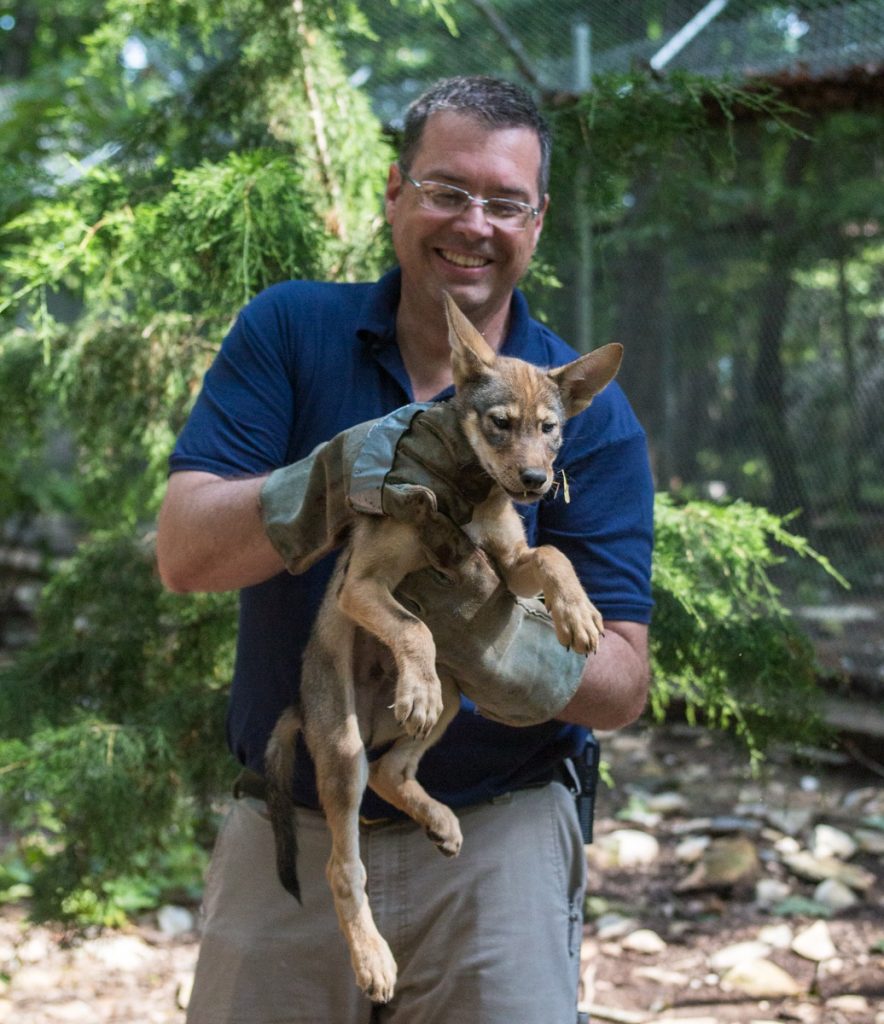
Chris Lasher holds a red wolf pup at the NC Zoo.
A limited-edition casting
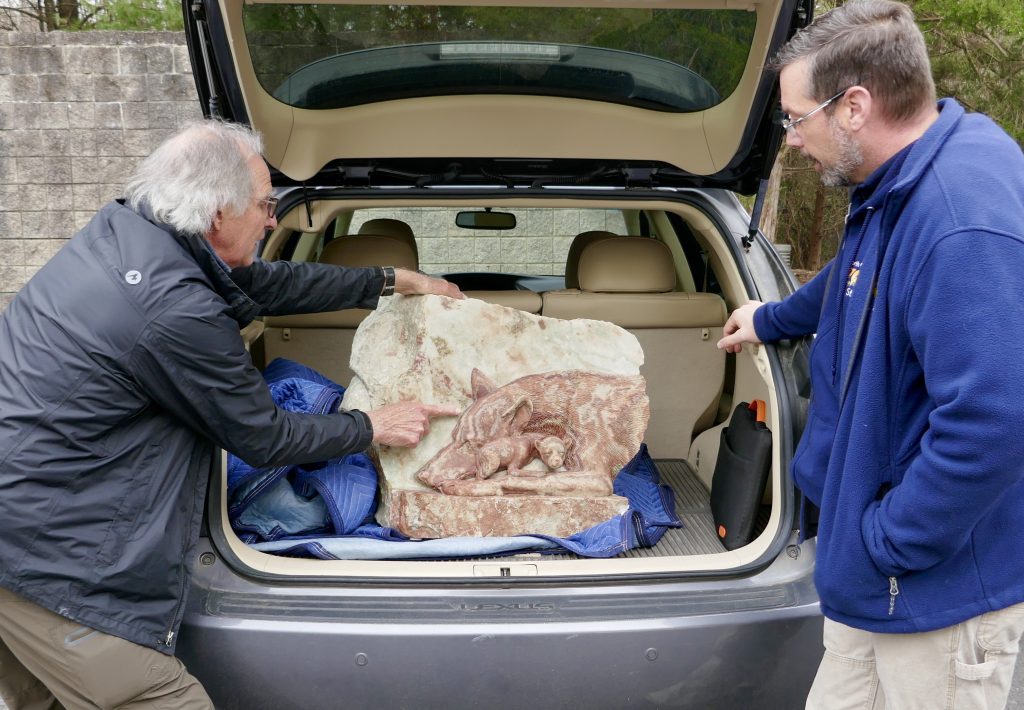
Dale & Chris Lasher discuss making castings from the original sculpture.
Since the stone original is one of a kind and can only be displayed in one place, our initial collective thought is to make a limited edition casting. The red wolf art can then be shared with multiple captive breeding facilities throughout the US.
We’ll cast a pack of wolves and get them in a number of places where they can help heighten awareness. This sounds like a great plan!
After seeing the sculpture, Chris thinks many of the captive breeding facilities will be excited to have a casting. So, the next question? Which facilities should we contact? We kick around a lot of great ideas and identify some prospective locations.
Next stop, Ben Prater at Defenders of Wildlife to get his ideas and feedback on our initial thoughts. Ben is in charge of the Defenders of Wildlife red wolf program and is another champion in the fight to make sure red wolves don’t go extinct in the wild (for the second time). Again, we discuss some great ideas including Defenders’ sponsoring several of the castings.
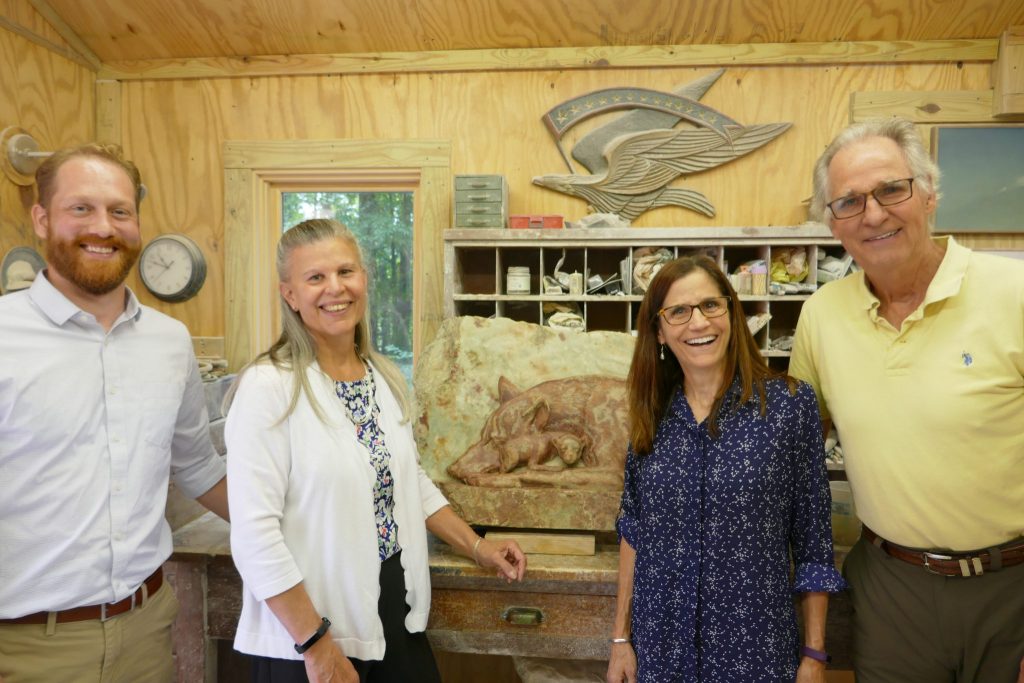
Defenders of Wildlife team visiting our studio. Ben Prater, Jamie Rappaport Clark, Nina Fascione & Dale.
How do you make a casting?
Ok, so how do you make a casting? First, you look at options for materials; resin, fiberglass, cement and bronze are the most popular materials. We eliminate bronze because of the high cost and the limited coloration that could be achieved.
Resin and fiberglass are two things to consider, but we decide to focus on cement, a new medium for Dale. It can go outside or inside, making it more versatile than the stone original. Next we have to find a foundry or someone to make the castings.
Finding a casting partner
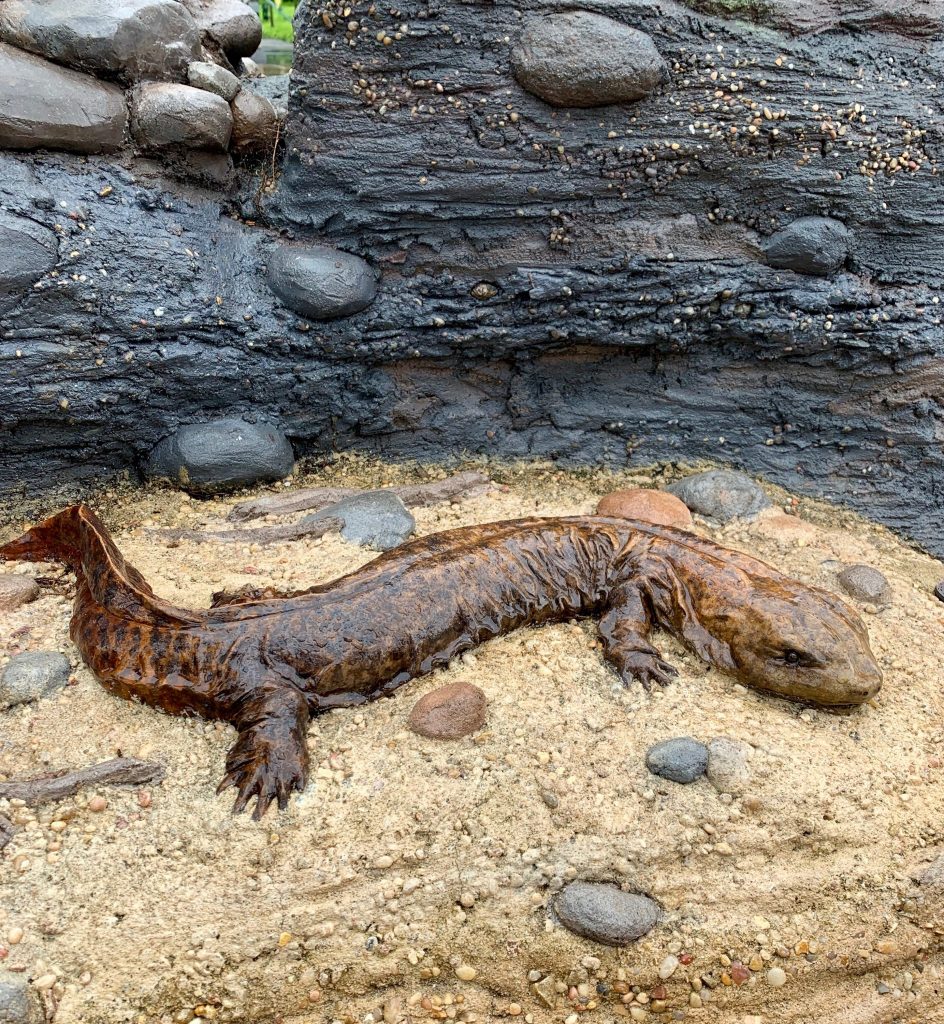
A hellbender sculpture at the San Francisco Zoo.
While researching casting medium options, we happen to be in California visiting the San Francisco Zoo. Wow, do they have a cool sculpture garden! Not only do they have a wide variety of sculptures on display, but the zoo also has them in all of the medium options we are considering. The hellbender casting, from resin, is one of our favorites.
We wonder who sculpted all of the Zoo’s animals. Turns out, Scientific Art Studio (SAS), right in San Fransisco, is the creator.
Dale calls them and they are excited to help conservation and up for the challenge of making the red wolf castings. Ron Holthuysen, the owner of SAS, agrees cement will be the best material to create the new pieces.
First, you need a mold
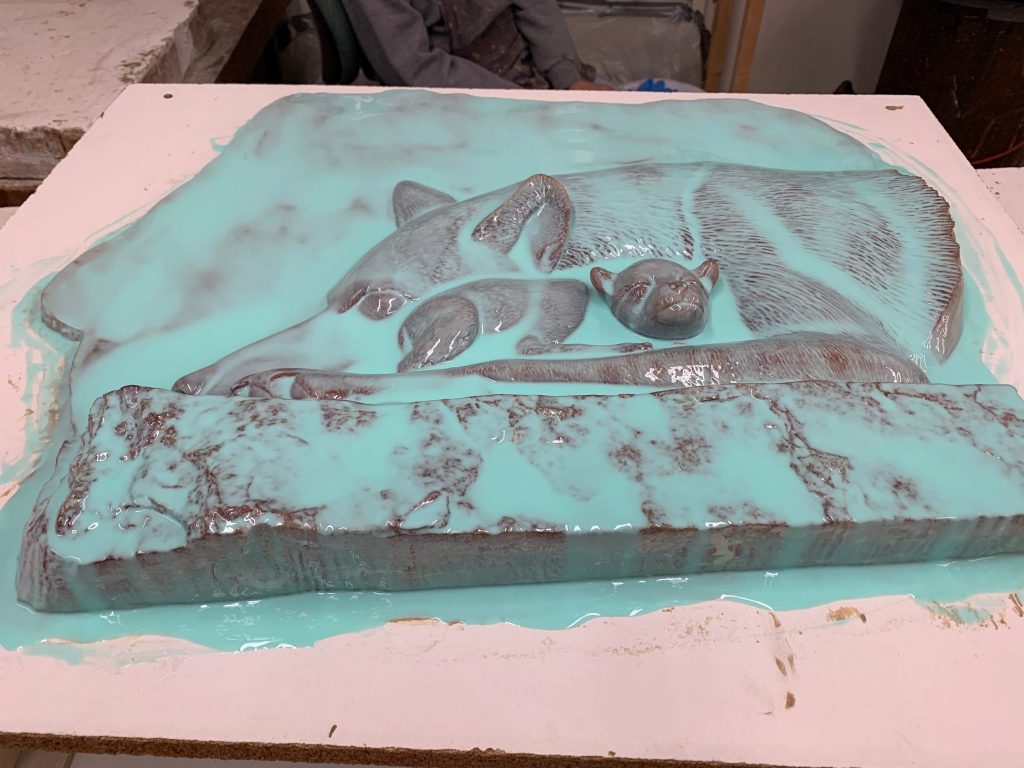
A mold is being made for the casting.
So back to how do you make a mold in order to create multiples of a one-of-a-kind original? The basic process for making a casting of a sculpture is first to determine the material from which you want your casting made. Then have a mold made, usually from silicone, of the original and make a casting from the mold. In this case, cement is poured into the mold & allowed to harden. It is then removed & hand-painted.
But back to the mold. Of high importance is getting the sculpture to the mold maker without damaging it in transit. Luckily, Carolina Bronze, a foundry we use for molds, is a short 3-hour drive from us. We will have Carolina Bronze make the mold & then mail it to Scientific Art Studios. This avoids the risk (and cost) of shipping the stone original out to California to have the mold made.
Coloring the wolf art casting
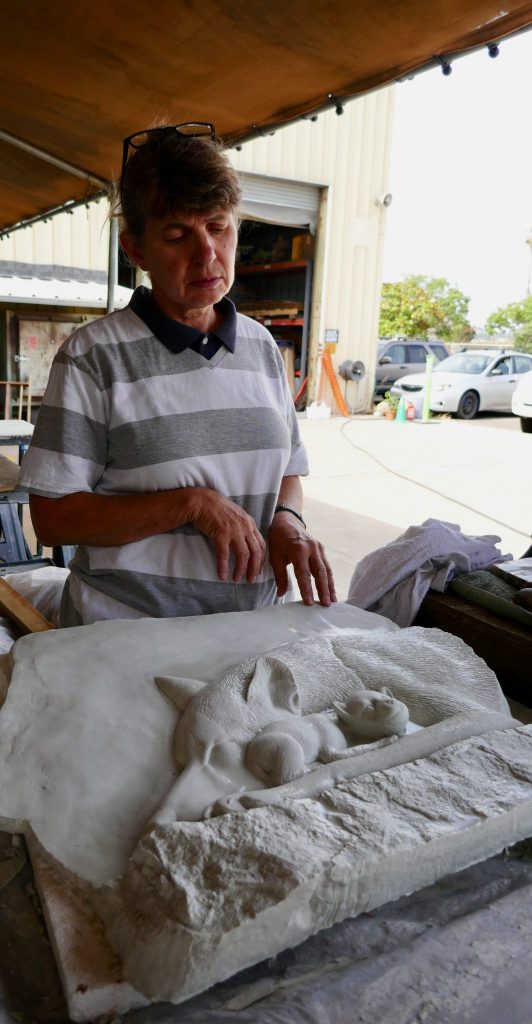
Caroly describes the coloring process on a white cement casting.
We meet with Caroly Van Duyn, the artist at SAS who will work her magic on coloring the castings. Check out her website, Artistystone, where you can see some of the beautiful handpainted tiles she offers. She explains each casting needs to be “cured” for 7 days before she applies color.
Since every casting will be hand colored, each will have its own unique characteristics. There will be no two alike!
Do you know a good home for a casting?
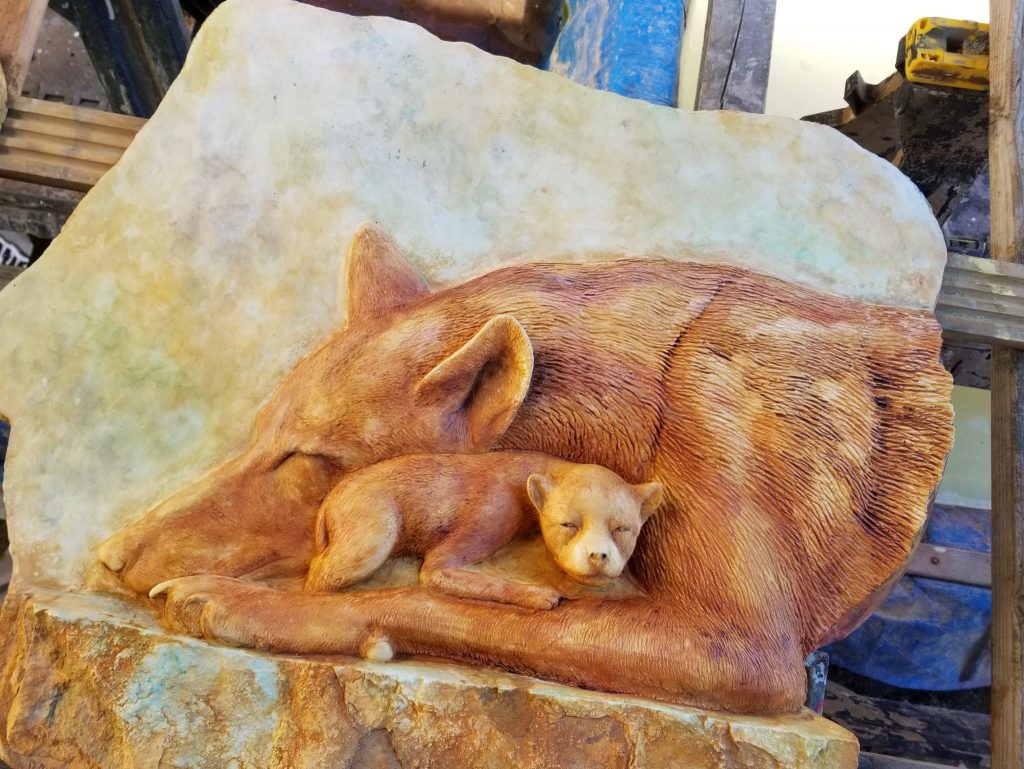
One of the castings after painting.
Working with Chris Lasher & Ben Prater, we now have homes for all of the original 10 castings. Each will be donated to a red wolf conservation center to help bring more awareness/funding to these amazing wolves.
To learn where each casting will be donated, check out “Our Growing Wolf Pack” blog. In our wildest dreams, we never thought wolf art would help so many folks learn more about red wolves!
And as an update, a total of 36 castings have been or will be donated to zoos & breeding facilities across the U.S. We are definitely psyched.
